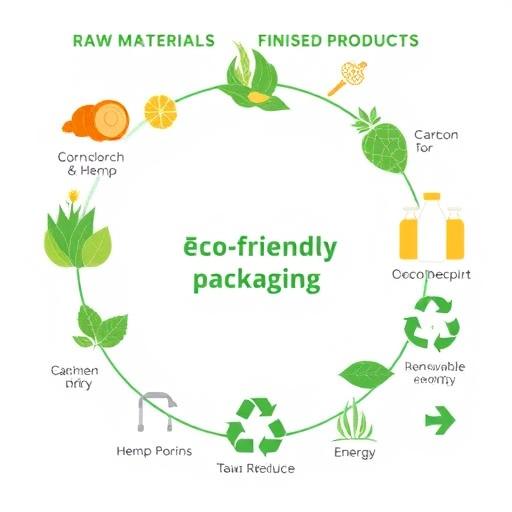Unleashing the Power of Creativity in Science Communication

Unleashing the Power of Creativity in Science Communication
Unleashing the Power of Creativity in Science Communication
The Intersection of Creativity and Science Communication

In our rapidly advancing world, the need for effective science communication has become more significant than ever. Science is not merely about numbers, graphs, and complex terminologies; it is a narrative, a story waiting to be told. Creativity plays a pivotal role in this storytelling process. When science is communicated creatively, it becomes accessible and engaging to a broader audience. Effective science communication can turn complex scientific ideas into relatable stories, illustrations, and analogies that resonate with individuals regardless of their background.
Creativity can manifest in many forms within science communication—through visuals, writing styles, public speaking, and even social media engagement. For instance, a visually stunning infographic can make a scientific phenomenon come to life, while a well-crafted narrative can tug at the heartstrings, inspiring action or curiosity. By employing creativity, we can bridge the traditional barriers of science education, making the complex world of scientific research compelling and comprehensible. In essence, the fusion of creativity and science communication has the potential to ignite passion, foster understanding, and spur change in society.
Why Creativity is Essential in Science Communication
Creativity in science communication is essential for several compelling reasons. First and foremost, it enhances understanding. A creative approach can simplify highly technical information, allowing the audience to grasp concepts without feeling overwhelmed. When people can visualize or relate to scientific concepts, they are more likely to remember them and engage in discussions about them.
Moreover, creativity helps to spark interest. In a world inundated with information, attention spans are growing shorter. A creative communicator has the ability to capture and retain attention during talks, presentations, or written pieces. Think of how a captivating story can motivate a room filled with people, while dull statistics may lose them within moments. A unique approach can transform the ordinary into the extraordinary, leading to heightened curiosity and engagement.
Finally, creativity fosters emotional connections. Scientific discoveries can often feel detached or cold. However, impactful science communication can evoke emotions—curiosity, excitement, fear, or hope—which are vital for personal connection and action. When individuals feel a personal stake in scientific advancements, they are more likely to support, advocate for, or participate in scientific initiatives.
"Creativity is intelligence having fun." - Albert Einstein
Bridging the Gap Between Scientists and the Public
One of the critical functions of creativity in science communication is its ability to bridge the gap between scientists and the public. Scientists, while experts in their fields, often grapple with the challenge of communicating their findings in a way that the general public can understand. Conversely, the public often feels alienated by the jargon-heavy language of the scientific community. Creativity acts as a comfortable linkage between these two worlds.
Utilizing tools such as storytelling, visual arts, social media, and interactive presentations can transform complex scientific topics into relatable content. Scientists can embrace creativity by participating in outreach programs, leveraging community art and culture to communicate their work. They can collaborate with artists, writers, and educators to craft messages that resonate with local communities and their unique values.
This bridge building isn't a one-way street; public engagement also benefits scientists. When the public becomes invested and inspired by scientific narratives, the demand for scientific inquiry increases. Citizens who understand and appreciate science are more likely to advocate for funding, participation in citizen science, or policy changes that reflect scientific understanding.
Creative Techniques for Effective Science Communication
How-To: Unlock the Full Potential of Creativity
- Storytelling: Develop a narrative that weaves facts, characters, and emotions. For example, rather than reciting statistics, share a case study of a patient's journey through a health crisis and the scientific breakthroughs that impacted their recovery.
- Visual Storytelling: Use infographics, animations, and videos to present data and concepts visually. This not only makes the content more engaging but can help clarify complex information.
- Analogies and Metaphors: Use familiar concepts to explain the unfamiliar. For instance, comparing the function of the immune system to a security team defending a building can help laypeople understand its importance.
- Interactive Experiences: Whether through workshops, community events, or online platforms, engage audiences through hands-on experiences that allow them to explore scientific concepts actively.
- Social Media: Utilize platforms like Twitter, Instagram, or TikTok to disseminate information creatively. Short, catchy posts with infographics or videos can reach vast audiences.
Overcoming Challenges in Creative Science Communication
While the utilization of creativity in science communication is immensely rewarding, challenges do arise. One of the primary obstacles is the fear of oversimplifying concepts to the point of misrepresentation. Striking the right balance between creativity and accuracy can be arduous. It is vital to remember that while creativity can enhance understanding, it should not dilute the scientific integrity of the message.
Another common challenge is resistance from the scientific community. Traditional views may prioritize the prevalence of data and scientific rigor over creative approaches. Addressing these concerns requires ongoing dialogue that emphasizes the importance of engagement alongside accuracy. Scientists must be educated about effective communication strategies and encouraged to see creative expression as a tool rather than a hindrance.
Lastly, standing out in a saturated platform can feel daunting. With countless voices vying for attention, thinkers in science communication must foster unique and innovative methods continuously. Embracing creativity as a dynamic process rather than a fixed toolbox encourages continual exploration and adaptation.
"Innovation distinguishes between a leader and a follower." - Steve Jobs
Taking Action Towards Creative Science Communication
The journey towards effectively integrating creativity in science communication is not a solitary endeavor; it requires willingness, empathy, and collaboration. Here are actionable steps to kickstart this creative journey:
- Assess Current Communication Strategies: Reflect on your current approach to science communication and identify where there may be room for creative enhancement.
- Diversify Input Sources: Collaborate with colleagues from other disciplines. Engage with artists, writers, and educators who can provide fresh perspectives on conveying information.
- Seek Audience Feedback: Create opportunities for dialogue with your audience. Understand their experiences, interests, and comprehension levels to tailor your communication effectively.
- Experiment and Reflect: Steer away from perfection in initial attempts. Embrace trial-and-error strategies in your creative approaches, and reflect on the outcomes for future iterations.
- Educate and Advocate: Share your successes and the benefits of using creativity in science communication within your professional circles. Advocate for the inclusion of creative trainings and workshops in your community or institution.
Conclusion
In conclusion, creativity serves as the lifeblood of effective science communication. By embracing creative strategies, scientists, educators, and communicators can transform complex ideas into engaging narratives that resonate with audiences. This journey requires overcoming challenges and fostering collaboration across various disciplines. By igniting curiosity, inspiring action, and bridging gaps between the scientific community and the public, we can create a world where science is not just understood but is celebrated as an integral part of our human experience. Remember, as we embark on this journey, "creativity is intelligence having fun," and the story of science is waiting to be told!
Ready to Ignite Your Creativity? 🔥
Join us on the journey to revolutionize science communication through creativity. Your voice matters!
